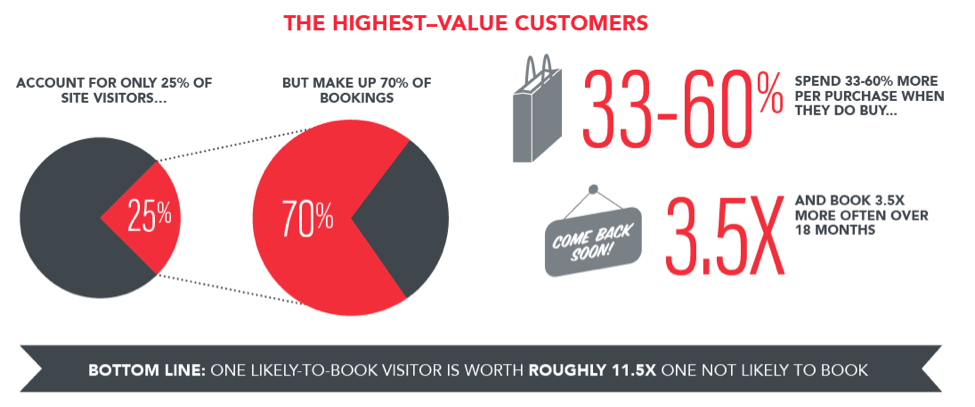Skift Take
In the age of smarter segmentation and targeting, utilitarian and comparison shopping ads no longer have to impact conversions.
This sponsored content was created in collaboration with a Skift partner.
Comparison, or cross-shopping, advertising represents a $2 Billion opportunity for travel e-commerce companies. Some in the industry would have you believe that these types of ads – those that show other brand’s search results or prices, or allow users to continue their travel searches on other sites – don’t cannibalize bookings. In other words, they say that sites can show these high engagement, utilitarian ads to all of their visitors with no impact to conversions.
That’s just not true.
Relevant ads delivered in the right place at the right time attract significant user attention and interaction. From a media perspective, that’s a good thing. It means that the user sees value and utility in the ad. On the other hand, the risk of cannibalizing conversions with media is real, and the loss of a single lost booking has a greater impact than it may initially appear.
A site’s highest value users — those who are most likely to convert — are also more likely to book higher value trips and come back to book again in the future. These visitors can be worth more than 10X the value of an average visitor over their lifetime.
So where does that leave travel brands? Should they forego material profit from advertising in order to protect the < 4% of users who can be counted on to book?
Hardly.
The good news: is cannibalization risk is manageable. There is a middle ground between bookings and advertising. Sites that intelligently serve comparison ads see higher overall profits as result of higher conversions and increased ad revenue.
To mitigate the risk of cannibalization, travel brands need to identify which users are likely to convert in any given moment – and not show those users ads. These high value users should be segmented out of the target pool to be protected from distraction. Brands should keep them focused on the task at hand – progressing through the purchase funnel.
As Icelolly.com CMO Ross Matthews says, “Showing ads to 100% of your site visitors would be insane.” Instead, only those who are unlikely to convert in current or future sessions should see ads; the rest should be spared. This way brands can confidently monetize the rest of the audience in whatever way is most appropriate for each shopping journey.
Like cross-shopping, cannibalization isn’t to be feared, merely managed. Through effective segmentation, travel brands can preserve transaction profits and grow media revenue at the same time. Now that travel brands are search engines, the two are not mutually exclusive. In fact, maximum total profit results when they’re done together.
To learn more about mitigating transaction risk, how BudgetPlaces profits from segmentation, and other myths in online travel media download this ebook: Top 5 Myths in Travel Media.
Free Download
This content is created collaboratively in partnership with our sponsor Intent Media
Have a confidential tip for Skift? Get in touch
Tags: advertising, media, shopping


